Its Pathology & Treatment,”
by Chetan Prakash
Acknowledgment:
Chapter 4 of my teacher Saotome Sensei’s book: The Principles of Aikido (Shambhala, 1989) is my highest recommendation for reading about the meaning and purpose of ukemi. Any mistaken understanding I have of his teaching is of course, mine and not his.
Let’s start with some quotes to set the tone of the discussion:
“Aikido: The spirit of honest attack and loving reconciliation” attributed to O Sensei
“As your training progresses, always remember that the key to gaining the ability for spontaneous and creative technique lies in good ukemi;” — Mitsugi Saotome Shihan, in “The Principles of Aikido”
“Ukemi is like a leaf falling from a tree, spiraling down to a fast river: the moment it touches the river it is instantly carried downstream…”— Hiroshi Ikeda Shihan, at a seminar, 1999: interpretation mine
“What is Kaeshi Waza? Kaeshi is ukemi, ukemi is kaeshi – my choice.”— Hiroshi Ikeda Sensei, private communication, c. 1995
“Ukemi: skill at receiving arts at a level similar to that in performing them and so demonstrating understanding of technique”— Aikido Association of Northern California test requirements (emphasis mine)
Notes: 1. There is also the saying: “Uke is always right.” It may seem in what follows that I disagree with this. I don’t: off the training mat, that is always true. Ichi-go, ichi-e: there’s no time to dwell on our emotional judgments and hopes. On the mat, it ought to be the aim of one’s training to make this quotation true (and how to do this is the subject of another essay…): Do not interrupt your execution for “another chance.” This article is to be seen in a pedagogical context of helping people learn Aikido. 2. I use the word “ego” in this essay to indicate the illusory, Eastern, sense of separation (“Ahamkar” in Sanskrit), not the positive Freudian ego which is a function of the psyche that (at its best) identifies and copes with reality, using human capacities. The two usages are almost opposites! 3. In what follows, only the first appearance of a Japanese word will be italicized.
Here I will discuss ukemi in two dimensions: as part of basic Aikido study (kihon waza) and as a budo practice, or keiko.
In basic Aikido, ukemi usually means the receiving of a technique executed by nage, the person being attacked. As such it presupposes two things:
A strong, committed and honest attack; and
A movement of the attacker in complete harmony with nage’s intention.
So, in fact, the onus to produce the desired result, in kihon waza, is more on uke than on nage.
In budo practice there is a transformation of ukemi, based on skill at the kihon level, into a much more sophisticated function. Yet this transformation comes from a very simple idea: uke attacks in all sincerity and with deadly intent, but upon having the attack rendered ineffective, enters survival and/or reversal mode, while maintaining connection with nage, with the greatest alacrity. To elaborate:
Attacking:
Usually basic technique is practiced slowly, whether from a static attack or from a moving one. Why? One reason is that the practitioners involved may not have the skill, as yet, to go full on with each other and still stay safe. Even if the practitioners do have a great deal of skill in being thrown, struck or pinned, slower practice is the best way to study carefully the subtler aspects of technique, as well as the fundamentals of aiki behind it. One can work with a single principle at a time and discover what it takes to embody it in the midst of an encounter, without over-exciting one’s spirit to the point where fear of injury (or failure) takes over. In general, for beginners or even seasoned practitioners, significant new learning usually cannot take place at full speed. There is definitely a place for practicing as fast as possible – it’s fun, it builds courage and stamina and it shows some of the limits of one’s skill, but if it is done so fast that the parties lose sight of the level of their own fear and tension, people may well be enjoying themselves – but without learning much.
In kihon waza, uke’s job is crucial to nage’s learning process. If uke’s slow attack does not faithfully simulate what would happen at normal speed, nage is not going to learn how to deal with a real event, at real speeds. Any deviation from the fully committed attack that stays connected with nage’s initial position and finishes where it should (through the body for a strike, strongly connecting to the appropriate body parts in a hold), renders nage’s intended response, and therefore the art, meaningless. Nor does it help nage’s learning if uke’s subsequent movement is at odds with the progression of the technique.
So in our usual, medium-to-slow paced practice, uke is a person who maintains an attack in spite of the natural urge to counter nage’s rather obvious response. This both requires and engenders mental discipline and is motivated by a desire to help, at lower speeds, nage to learn responses that would become appropriate and effective only at more realistic speeds.
Flowing:
Their is a corollary to this steadfast suspension of disbelief expressed in uke’s continuing attack: As the nage’s appropriate response to it are realized in kuzushi and then projection or pinning, an agreement occurs: uke will now use ukemi skills so as to survive nage’s movement without injury. At, and beyond, the transition from attack to survival there is, ideally, no further need for uke to act “as if.” Rather, uke is now practicing complete agreement with the forces of gravity and inertia, together with nage’s centripetal or centrifugal contribution.
In the beginning of training, terms like go no sen, sen no sen and sen sen no sen are all appropriate to this type of basic practice, whether static, moving or ki no nagare. This is because the attack is, at least in basic training, choreographed. However, such terms lose their meaning in “advanced” keiko, when sufficient maturity in ukemi and internal practice develops into an embodiment of aiki.
So where does the pathology come in?
It starts with katatedori kokyu ho. All of us know that it is the rare beginning student whose grip on nage remains constant throughout the movement. It takes a difficult act of imagination to see that the movement done slowly, over a couple of seconds, is simulating something that would, in an actual encounter, happen much faster: in as little as 0.2-0.4 seconds! It takes a while – as well as a teacher who insists on it – for students to see the necessity of holding nage’s whole body with their own whole body – not just the hand – and so to allow themselves to move their feet with nage’s response. Only by freeing the feet to move can the grip be honestly maintained. Not before this is done can uke see that it is the attack that provides the energy and intention which, responded to with appropriate connection and movement, takes uke’s balance.
For this reason uke is often referred to as nage’s “teacher.” Uke sets up the conditions that make a particular technique or set of movements relevant. It would seem to be better phrased as “giving ukemi” rather than taking it. So uke needs to have some understanding of how the technique works. To develop this understanding, all students need to be able to do the entire ukemi by themselves, with an imaginary nage. Also useful is the opposite practice of moving as nage with an imaginary uke.
In basic technique, and more so in budo keiko, uke needs to be present from beginning, through the execution and also after the art is done. At the beginning, the confrontation. Then, strong attack. During the execution, the flowing, like a leaf on a stream. At the end, safe communication – with the mat, and with nage: landing in the right way and to the right place: “the sound of one hand slapping;” smoothly and without delay getting up to attack again: but doing so with a sense of respect for what nage could still do… This is Zanshin – unbroken awareness. If any of this is missing, the training of both parties suffers.
How can we train in such a way that learning is maximally enhanced?
In order to do this, we need to first understand what doesn’t work, and recognize such behavior in ourselves. Then we need to see how to fix it.
Ukemi Pathology
What can go wrong in ukemi?
First and foremost, the attitude to training can be off. People who “play” martial arts have the attitude of “let’s see what you can do.” Others have unresolved fear-issues that make them very stiff. Either of these attitudes often results in unintelligent behavior that leaves the attacker immediately open to kicks, head-butts, strikes etc. without any possibility of defense. Glomming on and excessive tension in the attack are symptoms of this kind of attitude. Another symptom is being so heavy that nage has to drag them around to finish the technique.
Then there are the “scaredy-cats” who don’t trust their partners. They will start an attack, and the moment nage responds with a movement they will – unconsciously – change the attack or start a block. Or, as is often seen in Ikkyo, they will start to back up, while still holding on, when nage starts the Ikkyo cut. So the attack disappears. Another example is that of the “absent uke.” These are the persons who think that Aikido is all about technique. It’s nage’s glory and uke is just there to provide nage with an opportunity to shine. They think it’s “their turn” when they are up for nage. As uke they will start an attack but the moment nage responds with a movement, the energy in their attack will disappear and they loose focus on their own ukemi. It’s as if they are done with the attempt and are now waiting around – or not – for their own turn.
Competitive reaction is also alive and well in many people. Taking every interaction on the mat as an opportunity to “win,” they are incapable of giving ukemi properly in their obsession with tricking nage up. Such people are better off doing MMA (mixed-up martial arts). One of the unfortunate results, seen more in some schools that in others, is that they will tend to do a lot of stopping of the movement, as if that makes them superior to nage. They need to be shown how dangerous that can be for them. I don’t mean that stopping should never be done: if there is no intent in nage, where should I, as uke, go? If my unbalancing is sending me one way and nage is fighting that to push me another way, nage is the one doing the stopping, not me. But, a lot of the time, stopping the movement is just ego.
On the other side of the spectrum, an all too common attitude in the Aikido world today is expressed in: “Aikido is a spiritual art, not a martial one.” People who have this attitude, even in the slightest, don’t know what an attack is. You see pictures of such people doing a fist strike with bent wrists – this would break their wrist were there any contact! Or worse, they strike at the air near the atemi point with neither focus nor intent, almost as a pro-forma part of their dance move. They grab weakly. Their ukemi tends to be over-obliging. One of the greater absurdities during training is seeing someone like this smiling happily while doing a strike – as if attacking someone is meant to be fun! Another symptom of this attitude is evident in many videos (of sometimes very beautiful Aikido movement with uke’s who seem eager to please): it is obvious that the nage has never been hit in his or her life. Otherwise they would not place themselves in the vulnerable positions that become obvious in their movement.
At an extreme, there is such a thing as becoming the “universal uke,” always ready to please and not taking responsibility for one’s own warriorship. Sometimes they become over-obliging “OK uke’s”, so that their partners end up having no idea whether their art works or not. Consummate artists of pliability, such folk are actually almost there: a spot of real leadership development can do the trick.
I have compassion for each of these attitudes. Each of us will recognize one or more of them as having manifested in our self, at least in our early training. Some of us were fortunate to have Sensei or sempai who put us in situations where we had to confront the truth about ourselves – and change our behavior. But I think it is important to understand that at the root of all these attitudes, there is a lack of trust, and a lack of humility. Ukemi training is humility training, par excellence. It is also the golden route to discovering the highest levels of skill in reversal, or kaeshi waza, and therefore counts as a major – perhaps the major – component of budo practice. But it equally has a lot to do with trust: trust in oneself, to move to safety as the art unfolds. Trust in one’s nages, that they will move smoothly and not roughly to execute their technique: that they will care for the safety of uke (i.e., if uke indeed, regrettably makes it necessary to require such care). Trust in Aikido.
Ukemi Materia Medica
How can an instructor best place students in the attitude-changing situations required to transform their ukemi?
Basic is, of course, lots of repetition of the basic skills of rolling and falling (or, really, “not-falling”) practice. In addition to the standard kneeling and standing rolls, this should include variations in configuration (one leg bent, or one leg straight out); in speed, from exquisitely slow to almost-dangerously fast; variations in height, such as rolling from a handstand, leaping forwards to roll, rolling from kneeling, squatting, fully prone or supine positions; high falls from kneeling solo, going over someone lying down, kneeling or bending over, standing high-falls while being held all the way to freely throwing oneself. Rolling while being pushed in any direction, rolling in any direction from a fixed stance, rolling in tight spaces or on slopes, rolling through other people who are also rolling around: both on the ground and standing. Doing forward and back rolls with a partner while touching hands. Finally, every now and then rolling should be practiced on wood, concrete or asphalt – and, e.g., off of picnic tables.
Now all this can give students a certain confidence in their own ability to land safely. But it is not enough: connection with nage has also to be taught. This is the area where most of the pathologies mentioned above appear. Here the basic skills are two:
· knowing how to attack, and
· knowing how to flow, i.e., to feel nage’s intent – and being able to follow it, however briefly (at least until the inevitable becomes obvious).
Unfortunately, many Aikido schools seem to have adopted the idea that “we never hit,” so their students do not learn four important lessons of budo:
1. How to hold different parts of nage’s body in a variety of ways that can be used to throw, pin or set up a follow-up strike with any part of one’s own body;
2. How to deliver a realistic strike that could cause serious damage (dageki);
3. How to deliver a realistic strike that could energetically affect the partner’s balance (atemi: energy strikes as against the blunt-force trauma of #2.). Again, this should be learned with any body part;
4. How to discover one’s own suki (vulnerabilities, openings): both as uke and as nage.
Once these skills are acquired, it becomes realistic for the partner to simulate, even at lower speeds, the desire to survive and move away from the attack in a way that justifies the particular technique’s progression. Only then – not before.
This means that real atemi needs to be an integral part of our curriculum. For many Aikido practitioners, items 1., 2. and especially 3. above seem to be undeveloped. One reason for this is that students have not had a chance to confront their own fear of actually striking someone or something. [This is both a fear of hurting the other and a fear of hurting oneself.] Some Karate people spend a lot of time on makiwara overcoming this fear while developing striking skill; boxers attack focus mitts. I think some serious portion of our training should include learning actual strikes too. However, I feel that practice on firm makiwara boards or on heavy bags is not good for the wrists and other joints. So what to do? I would venture that a certain amount of time spent attacking focus mitts with men tsuki, shomen uchi and yokomen uchi is well spent. Tanren uchi training with swords is, properly taught, also a good practice. Knuckle pushups – on a hard surface – are excellent. In the end, the best way of learning to hit bodies is: to hit bodies. Alarming as this may sound, there are detailed and non-threatening drills in such arts as Systema that can both train the attacker to attack with proper atemi as well as help the receiver to dissipate the effects of a blow that actually lands. In Aikido we generally want to avoid the outcome in which a blow actually lands – this is indeed an excellent way of dissipating the blow! But what will you do if it does land? We need to practice to get beyond the tension of such situations.
Once the practitioner starts feeling confident in both giving and receiving blows, a whole world opens up. The enhanced effect of training in tachidori, tantodori and jodori starts to inform our empty-hand training instead of, oddly, staying separate (as it does too often).
As far as item 4. above is concerned, the best way to discover one’s suki while being nage is to have them pointed out: not in “cuchi waza” (talking-instead-of training) but in being struck: or in being surprisingly reversed in a pin or throw. The first, uke striking through nage’s opening, anyone can do. The rule would be to 1. Not to do this while suddenly (and sneakily) changing the speed of practice; and 2. not do this to hurt but to instruct (when this happened to Tom Cruise’s character in the “Last Samurai,” I’m sure the pain, though not ultimately destructive, was very instructive!). I don’t know why most Aikido Dojo today frown on such an entirely helpful behavior, other than the preservation of ego. A light bruise today could save your life tomorrow…
It is because they don’t get hit more often that we see uke’s glomming on and settling during randori in tests. Nobody has pointed out to them how crazy that can be in a real situation. And that’s easily done, with one strike. So, yes, I am advocating actually striking one’s partner: out of love, not aggression, and only with enough force to make the somatic point without severe injury.
The other suki-self-discovery, of having one’s efforts reversed, is something that needs to be done very carefully in training. I recall Saito Sensei refusing teaching kaeshi waza to mudansha at a San Diego seminar (and even having the windows papered over before that session!). I can certainly understand that this comes from a desire to not aggrandize the egos of immature aikidoka, which can easily happen in kaeshi waza. In most kaeshi waza training that I have participated in, the particular kaeshi being taught are turned into techniques themselves, so that it’s not really kaeshi: nage is meant to attack a certain way and uke reverses it this way. It just means that nage was actually uke and uke was really nage from the beginning, as against a spontaneous disappearance of their roles in the middle. I think kaeshi waza training, while starting that way, needs to grow realistic: show a range of possible responses to nage’s given technique, and then let the students see if any of them make sense – or if something else does. Moreover, if nage’s work is not ill-designed but is actually working, notice that and take the ukemi without argument! This kind of advanced practice requires close supervision by the instructor lest it turn into brute fighting. The key is that both uke and nage need to remember to be as relaxed as possible throughout the exercise.
Why is kaeshi waza training important?
Technically it is useful in refining the precision of one’s movement and connection, and so sealing suki. It is one of the major ways in which Aikido training can refine the spirit through the difficult forging process of burning up ego. There are some schools, such as Kobayashi Hirokazu ryu, which train kaeshi in every class, so this idea is not new. Most importantly, kaeshi waza is essential in developing the relaxed non-contention of pure ukemi, because it is only this pure ukemi that makes Aikido kaeshi possible.
In kobudo it was traditional for the teacher to take ukemi from the student, at least for the first few years of the student’s training. This has been reversed in many modern budo, including the way Aikido is practiced. I have heard of at least one Aikido shihan stating that there is no point in taking ukemi from the students because they couldn’t throw him anyway. Why not? Or, to put it another way, what happened to his choice? On the other hand, I once trained at a seminar in L.A. taught by Abe Seiseki Shihan when he was 81 years old and vividly remember how he came over to me when we were practicing kata-dori kuzushi and took ukemi from me – helping me immeasurably!
I am not saying that the current system should be reversed again. There is a good reason why it is the way it is: it takes, in my opinion, usually at least until nidan before a student can start taking sophisticated ukemi as described above. It is therefore, however, very important for teachers to take frequent ukemi from their students: both in order to enhance the student’s learning of technique, as nage, and also to model good ukemi for them. And, if occasionally kaeshi emerges, and it is done through love: well, that’s what good parents and teachers do
 Daito-ryu is a Japanese core style from which many modern variations have sprung. Shorinji kenpo, hapkido, Kodokan judo and aiki are martial arts that were originated by disciples of daito-ryu that have since splintered into numerous modern variations of their own.Daito-ryu aikijujutsu is one such splinter style that has somehow managed to adhere to the traditional teachings of its core style forerunner (daito-ryu) and its predecessor (aiki). But because of its adherence to tradition—and its insistence on retaining most of the more painful and deadly self-defense techniques—the martial art has remained relatively obscure.
Daito-ryu is a Japanese core style from which many modern variations have sprung. Shorinji kenpo, hapkido, Kodokan judo and aiki are martial arts that were originated by disciples of daito-ryu that have since splintered into numerous modern variations of their own.Daito-ryu aikijujutsu is one such splinter style that has somehow managed to adhere to the traditional teachings of its core style forerunner (daito-ryu) and its predecessor (aiki). But because of its adherence to tradition—and its insistence on retaining most of the more painful and deadly self-defense techniques—the martial art has remained relatively obscure.

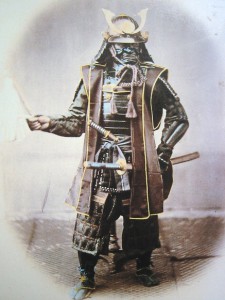

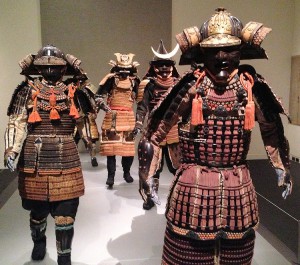

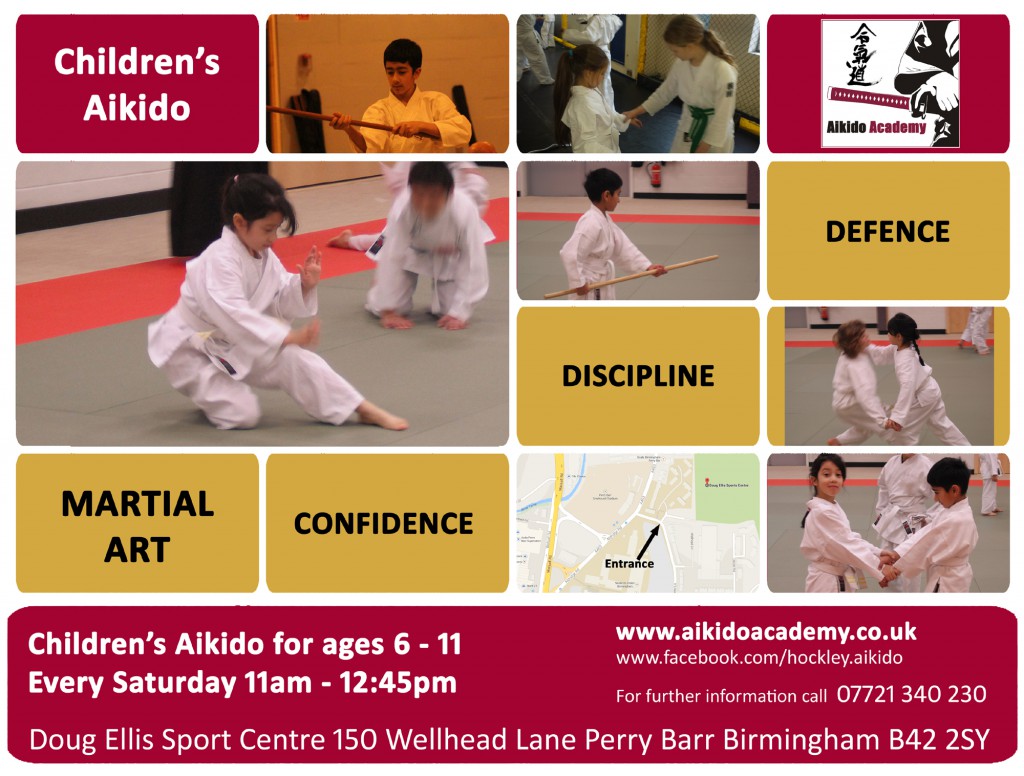

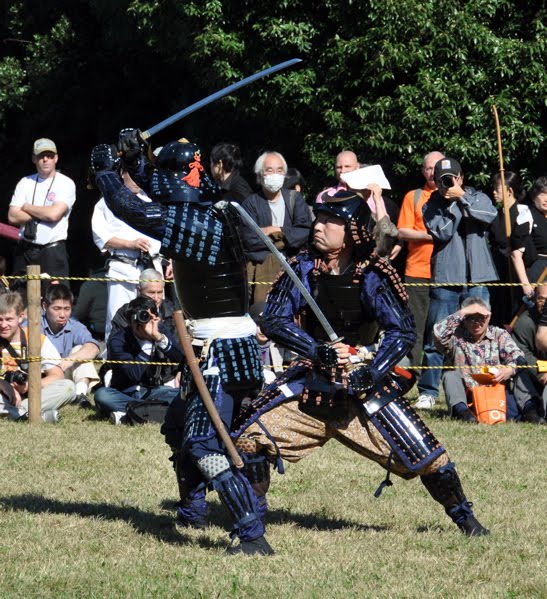


 Olivier Gaurin: These two Sensei were indeed my humble basis of work but I tried to follow every teacher, particularly Osawa Kisaburo Sensei. Like many old Sensei, I think that very few people understood what he was doing. It was an interesting Aikido, very flexible, but in a rigid mentality, all of that behind a very sympathetic mask, as is often the case here in Japan. Osawa Kisaburo Sensei was a bit like a peach with a big stone in it (laughs)! Of course I also particularly liked the classes of Arikawa, Watanabe and Endo Sensei and I think that their influence on me is still visible today.
Olivier Gaurin: These two Sensei were indeed my humble basis of work but I tried to follow every teacher, particularly Osawa Kisaburo Sensei. Like many old Sensei, I think that very few people understood what he was doing. It was an interesting Aikido, very flexible, but in a rigid mentality, all of that behind a very sympathetic mask, as is often the case here in Japan. Osawa Kisaburo Sensei was a bit like a peach with a big stone in it (laughs)! Of course I also particularly liked the classes of Arikawa, Watanabe and Endo Sensei and I think that their influence on me is still visible today.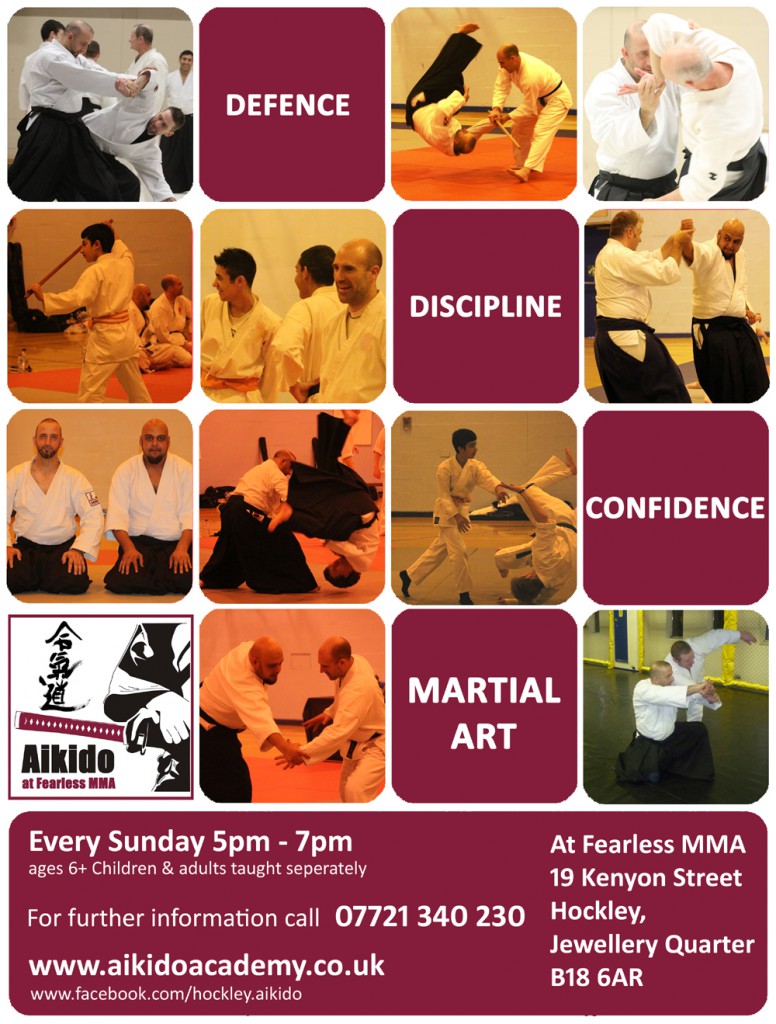
 all right regardless of what happens in the conversation, you are freer to engage. You begin to understand that:
all right regardless of what happens in the conversation, you are freer to engage. You begin to understand that: